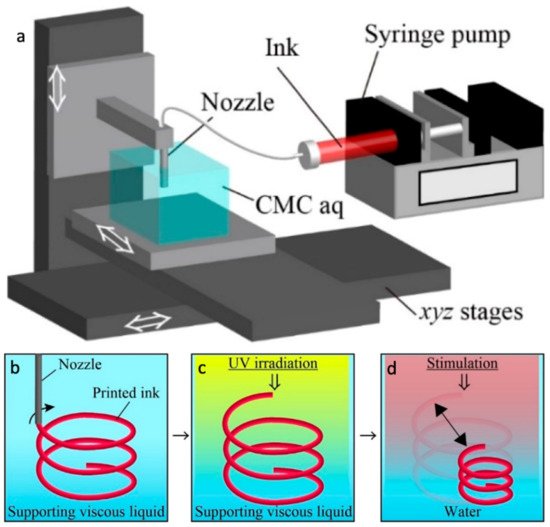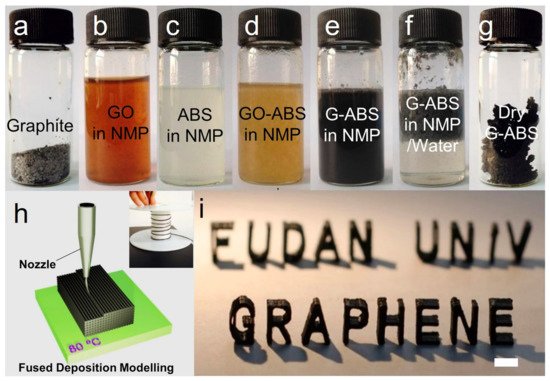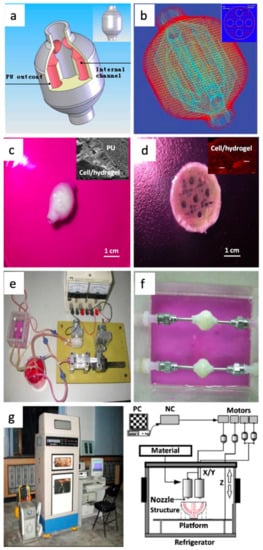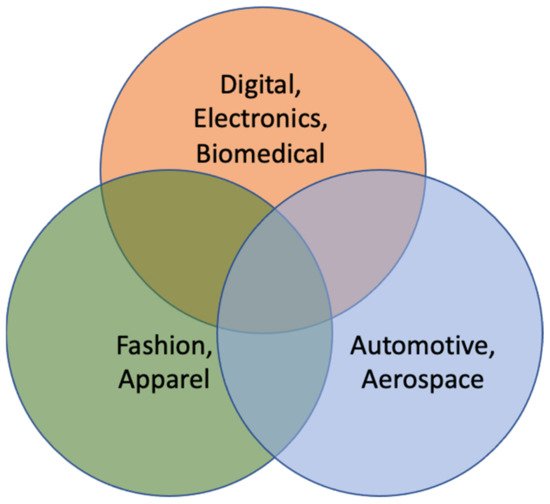Advanced manufacturing and additive printing technologies have made incredible inroads into the fields of engineering, transportation, and healthcare. Among additive manufacturing technologies, 3D printing is gradually emerging as a powerful technique owing to a combination of attractive features, such as fast prototyping, fabrication of complex designs/structures, minimization of waste generation, and easy mass customization.
- additive manufacturing
- advanced printing
- 3D printing
- 4D printing
1. Introduction
Additive manufacturing (AM), often referred to as rapid prototyping or 3D printing in the scientific literature, has evolved as a popular manufacturing technology since the 1980s [1]. In 1986, Chuck Hull recommended the fabrication of three-dimensional (3D) systems via a technology called stereolithography (SLA), which engrossed researchers’ attention and subsequently gave birth to AM technology, also known as 3D printing (or 3DP) [2][3][2,3]. Since then, 3D printing has been creating a sound reputation in all of manufacturing, although microstructures fabricated using 3D printing are primarily static in nature [4]. Three-dimensional printing is being widely used in polymer science and technology, space, nuclear, energy storage, biomedicine, and other fields owing to the rapid prototyping capability of 3D products even for complex designs/shapes [5][6][7][8][9][5,6,7,8,9]. In the manufacturing sector, 3D printing is mostly used for fabricating complex 3D objects and components of new products in the early stages of development. [10]. Although endowed with many advantageous features, one of the challenges remain in the layer-by-layer printing speed [11] and, precisely because of this reason, 3D printing has not been able to substitute traditional manufacturing methods completely or at least to a significant extent [2].
It was evident that the 3D microstructures manufactured out of smart materials, depending mostly on the functional properties of these materials, can change over time in a prearranged way. This has given birth to a new printing technology by Professor Tibbits in 2013 and introduced to the world as “4D printing” [12]. Four-dimensional printing (or 4DP) was first described with the formula of “4D printing = 3D printing + time”, which denotes the changes in the function, structure, or shape, of 3D printed objects over time [2][13][2,13]. This next generation printing uses smart materials with special properties and sophisticated programmable designs to prompt the 3D printed part to change its shape [14]. Given the ongoing development in the AM research and development, the description of 4D printing is expected to become more comprehensive [15][16][15,16]. Three-dimensional printing is a predesigned printing of a finished object, whereas 4D printing is the preprogrammed design of a 3D preprinted product into a flexible smart material, tailored with specific properties. The characteristic differences between 3D and 4D printing have been outlined in Table 1 [17].
Table 1. Characteristic distinctions between 3D and 4D printing techniques.
| 3DP | 4DP | Compared Characteristics |
|---|---|---|
| Structure formed using layer-by-layer deposition of 2D ink material | One more step of advancement of 3D printing with shape-changing programming property | Manufacturing approach |
| Metals, ceramics, thermoplastics, nano-, and biomaterials, | Smart materials | Printable materials |
| No programming step involved | Thermomechanical preparation, multimaterial printing to create differential thermal and mechanical stresses | Shape-memory programming |
| Forms rigid structure | Characteristics of structure flexibility change upon exposure of external energy stimulus | Shape flexibility |
| Engineering, electronics, medicine, dentistry, automotive, robotics, fashion, aerospace, defense, and nuclear etc. | Adds dynamic element(s) to all 3D printing applications, mostly employed in biomedical industries | Area of applications |
Compared to 3D printings, 4D printing has many advantages including material flexibility, which enables the exact configuration of material sensitivity with external energy stimuli [18]. Four-dimensional printing can print many 3D parts and objects that 3D printing can’t [19] The color [20], volume [21], and shape [22] of these printed objects can grow or shrink with environmental conditions and stimuli, such as light, water, air and temperature [12]. Four-dimensional printing has been applied to many fields successfully, such as bioprinting where printed biostructures can alter the material functionalities [23].
2. Advanced Printing Strategies
Recent 3D printing growth and expansion have not only focused on the refining of the quality of printed objects but also on the size of yields, initiating an entire spectrum of new opportunities for the printing technology. Three-dimensional printing is becoming a stirring technology: from merely being a means of rapid prototyping to an economically feasible option for mass production of materials by the development of printing competences, in both the size and complexity of end products.
There are three main stages in 3D printing process. The first step is the groundwork just before actual printing, when a 3D CAD file of the object is created. In the next step, the material with required specific properties is chosen, and then the actual printing starts. The printing materials include metals, polymers, ceramics, resins, sand, glass, textiles, biomaterials, and even food. Most of these materials allow adequate allowances to attain precise control over the printed objects. However, some materials, for instance glass, are not easily amenable to precise control of fabrication parameters yet and as a result intense research and development activities are still being pursued to achieve desire control during printing [24][27]. The final stage is the finishing step which requires the matching of specific instrumentation skills with that of the properties of the functional materials. Once an object is first printed, mostly it cannot be ready to use until it has been cured, lacquered, sanded, or painted to finish it as envisioned. Figure 1 Vdescribes various techniques of a typical AM processes, used for printing polymeric, metallic and ceramic components.
In addition to some of the advantages of 3D printing, such as production speed, flexibility in design and cost factors, there lies a number of challenges too. These include energy-intensive nature of the printing process, problems associated with mass manufacturing of products, and limited availability of ink material for printing. However, for small production runs, and prototyping, a 3D printer is often a massively better manufacturing option than the conventional ones.

Presently, fused deposition modelling (FDM); stereolithographic apparatus (SLA); selective laser sintering (SLS); and polyjet AM technologies are in use in 4D printing [17]. A 4D printed object can be thought of as an offspring from the marriage between smart material and a 3D printer. It can be developed by exposure to external stimulus through a direct or indirect interaction mechanism, and sometimes mathematical modeling is required for the design of the distribution of multiple materials in the structure [36][60]. A 4D printing set up is shown in Figure 26 a along with the concept of fabricating a 4D structure with internal gaps ( Figure 26 b–d).

3. Applications and Trends
Until lately, 3D printing was used mostly for prototyping reasons in the footwear and food industries. However, conventional market players together with emerging startups have started investing in AM technologies in recent years. The promising outcomes have been 3D printing of nanocomposites for various electrical and electronics applications. Wei et al. [38][104] confirmed that, a graphene reinforced acrylonitrile-butadiene-styrene (ABS) composite could be fused deposition modelling (FDM) printed into computer-designed models ( Figure 13 ) and improved electrical conductivity was detected.


As has already been explained, 4D printing, being an upcoming advanced version of the existing 3DP technology, is well poised to help accelerate growth in many research and industrial sectors. Some of the potential sectors include aerospace, engineering, automobiles, energy, manufacturing, defense, medicine and various other fields. Four-dimensional printing offers better reliability, improved consistency, and superior performance characteristics over 3D printing. Initial types of 4D printers contain versatile 3D structures pre-printed via 3D printing and that can be transformed to other sizes and shapes when immersed in water or exposed to light, pressure, gravity, or air [41][107]. Figure 15 summarizes the important roles of 4D printing in the field of manufacturing, as applicable to different industrial sectors. Although 4D printing has been in the manufacturing market over the last few years, its supply chain, with faster shipping and lower storage space options offer definite advantages. Four-dimensional printing removes a large degree of transportation and processing expenses, thus providing the supply chain with incredible applications [42][43][108,109].

The complex assemblies in the various applications will be way too labor-intensive and costly to manufacture using conventional fabrications technologies. The beauty of advanced manufacturing and printings lies in utilizing. Both the 3D and 4D printing offer great advancements, on the current standards, and are incredible technologies for the consumers, 4DP is more advanced, focusing futuristic applications on the technologies of the 3DP. However, 4D printing technology can have applications throughout numerous sectors as research and developmental efforts progress.
However, the notion of 5D printing is being talked about now and even investigated with [44][112]. Five-dimensional printing is not just an advanced version of 3D or 4D printing; it is a new branch of advanced printing. In this printing process, the printable object and the printhead have five degrees of freedom. In its place of the regular layer, it manufactures complex curved layers. In this AM process, the print object moves while the head of the printer is printing [45][46][113,114]. Thus, printing commences the curve path of the object being printed rather than moving through a traditional level as in the case of what usually happens for 3D printings. The main advantage of this 5D printing process is to produce a part with a curved layer with better mechanical strength. Added major advantage of this new advanced manufacturing technology is it uses less material compared to 3D printing. The new printing technique which combines the four-dimensional and five-dimensional printing techniques has also been conceptualized ( Figure 619 ). This means that the new six-dimensional (6D) printing is going to utilize five degrees of freedom and the final manufactured component will be a smart object [47][48][115,116]. This will be qualified for changing its properties or shape owing to its interaction with an external stimulus. A 6D printed object can be manufactured using less material, can perform movements by being exposed to an outer stimulus, and can be stronger than an equivalent 4D printed structure. Six-dimensional printings can allow the printed object to learn how to reconfigure itself appropriately, based on predictions via mathematical modeling, artificial intelligence, and external simulations.

